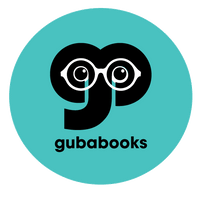Celebrating diversity with kids on International Mother Language Day
 Today is International Mother Language Day (IMLD). The United Nations Educational, Scientific and Cultural Organization (UNESCO) proclaimed February 21 as the International Mother Language Day in November 1999. Since February 2000, it has become an annual observation to promote multilingualism and cultural and linguistic diversity.
Today is International Mother Language Day (IMLD). The United Nations Educational, Scientific and Cultural Organization (UNESCO) proclaimed February 21 as the International Mother Language Day in November 1999. Since February 2000, it has become an annual observation to promote multilingualism and cultural and linguistic diversity.
Each year, UNESCO chooses a theme for the annual celebration of this important day. This year, the theme centers around Indigenous languages and its importance for development, peace building and reconciliation.
History and connection to Bangladesh
At the partition of India in 1947, the Bengal province was divided according to the religions of the inhabitants. The western part became part of India and the eastern part became a province of Pakistan known as East Bengal and later East Pakistan. East and West Pakistan were separated from each other by 1600 Km of Indian territory. There were economic, cultural and linguistic differences between the two regions that resulted in tensions in 1948 when Pakistan's government declared that Urdu was the sole national language. This sparked protests amongst the Bengali-speaking majority in East Pakistan. The government outlawed the protests but on February 21, 1952, students at the University of Dhaka and other activists organized a protest. Later that day, the police opened fire at the demonstrators and killed four students. These students' deaths in fighting for the right to use their mother language are now remembered on International Mother Language Day.
The Shaheed Minar (martyr’s monument). The real structure in Dhaka, Bangladesh is covered with flowers of respect every year on February 21.
At the partition of India in 1947, the Bengal province was divided according to the religions of the inhabitants. The western part became part of India and the eastern part became a province of Pakistan known as East Bengal and later East Pakistan. East and West Pakistan were separated from each other by 1600 Km of Indian territory. There were economic, cultural and linguistic differences between the two regions that resulted in tensions in 1948 when Pakistan's government declared that Urdu was the sole national language. This sparked protests amongst the Bengali-speaking majority in East Pakistan. The government outlawed the protests but on February 21, 1952, students at the University of Dhaka and other activists organized a protest. Later that day, the police opened fire at the demonstrators and killed four students. These students' deaths in fighting for the right to use their mother language are now remembered on International Mother Language Day.
The protests continued as Bengali speakers campaigned for the right to use their mother language. Bengali became an official language in Pakistan on February 29, 1956. Following the Bangladesh Liberation War in 1971, Bangladesh became an independent country with Bengali as its official language.
The Shaheed Minar (martyr's monument) in Dhaka, Bangladesh, pays homage to the four demonstrators killed in 1952.
Celebrating language diversity with kids
Languages are powerful instruments of preserving and developing our tangible and intangible heritage. Learning a new language is also a great tool to understanding a culture that is different from our own. Here are four fun and super simple ways to introduce linguistic diversity to children:
#1 Learn to say ‘hello’ in different languages!
A small gesture that can go a long way when you meet people from different backgrounds.
# 2 Dance to the Hula and learn Hawaiian
An important part of any preschool classroom, singing can help children to learn vocabulary and communication skills. Why not dance the hula and learn another language while you’re at it?
#3 Count ten toes in four languages
This catchy kid’s song teaches children to count in English, Spanish, Japanese and French.
#4 Watch a foreign language film
This last one is my favorite, although it would only apply to big kids who can read subtitles. If you’re not familiar with Studio Ghibli produced anime feature films, then this is a great opportunity to watch one of these brilliant Japanese classics.
Guba Publishing publishes Bengali inspired diverse kid lit, thus we wish every one:
Happy International Mother Language Day!

